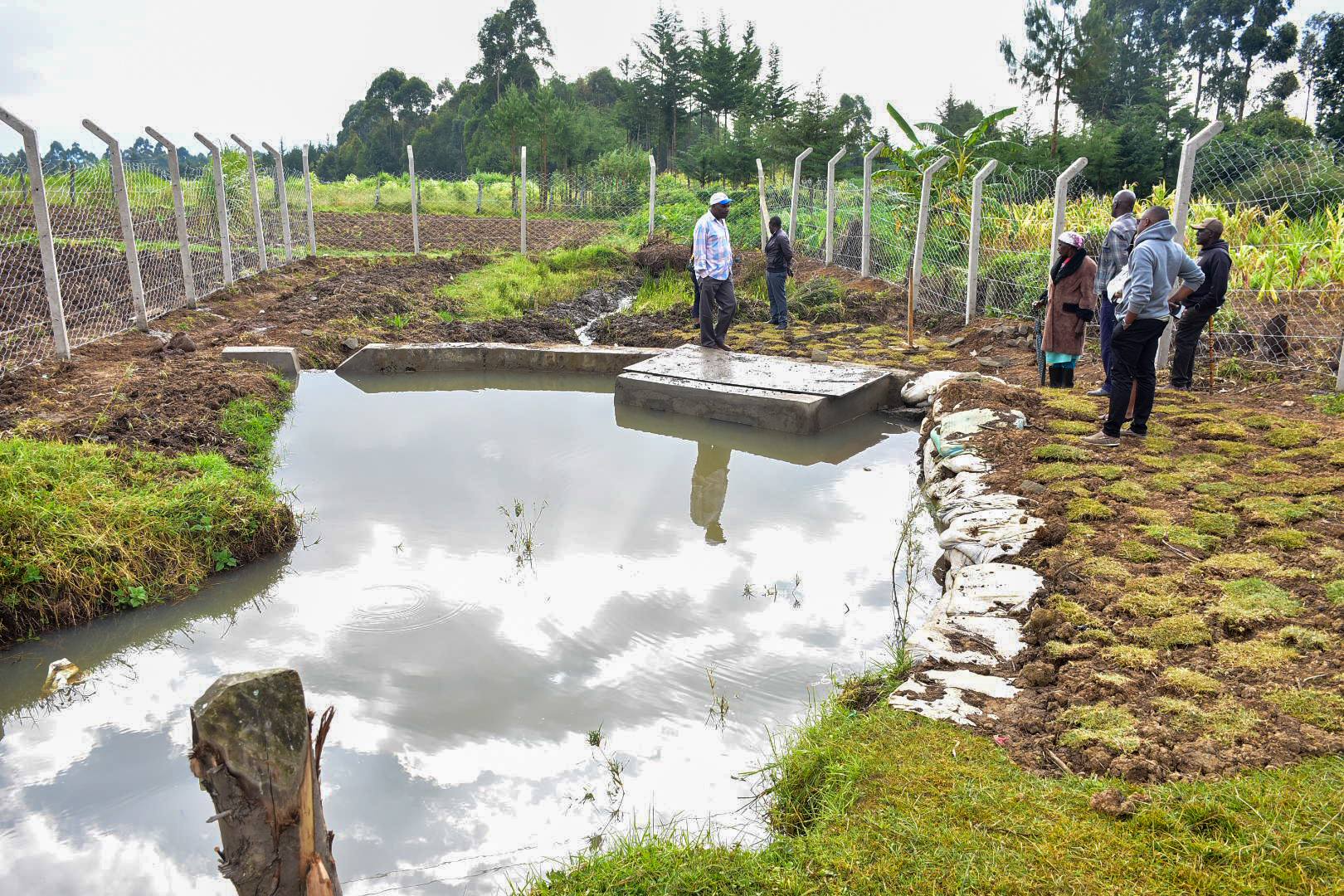 Kinoria spring, one of the many springs being rehabilitated by Nyeri county government to boost water access and fight environmental degradation
Kinoria spring, one of the many springs being rehabilitated by Nyeri county government to boost water access and fight environmental degradationNyeri county government has embarked on streams rehabilitation programme to boost access to clean and natural water for residents while fighting climate change.
According to the Kenya Health Demographic Survey released in 2022, only 25.3 per cent of Kenyan households have access to piped water in their houses, yards or plots with only 15.1 per cent of rural families accessing the precious commodity.
This has compelled many rural families to rely on rivers, springs and wells as their main source of water, exposing them to waterborne diseases and water shortages.
As such, the county has started rehabilitating springs relied upon by residents for water in partnership with Financing Locally-Led Climate Action Program (FLLoCA), a World Bank-funded programme.
The aim of the programme is to promote conservation and protection of the springs for a continuous supply of reliable and clean water as a way of boosting community resilience against the climate change.
“Once well rehabilitated, these springs will provide a steady supply of reliable and clean water for domestic use,” the Water, Environment and Climate Change executive Fredrick Kinyua said.
Despite providing clean water to communities, springs also play a vital role in supporting local ecosystems by providing habitats for plants and animals.
Kinyua said the springs also provide a sustainable water source that can help reduce reliance on treated and processed water supplies but can cause health risks due to contamination if not well maintained.
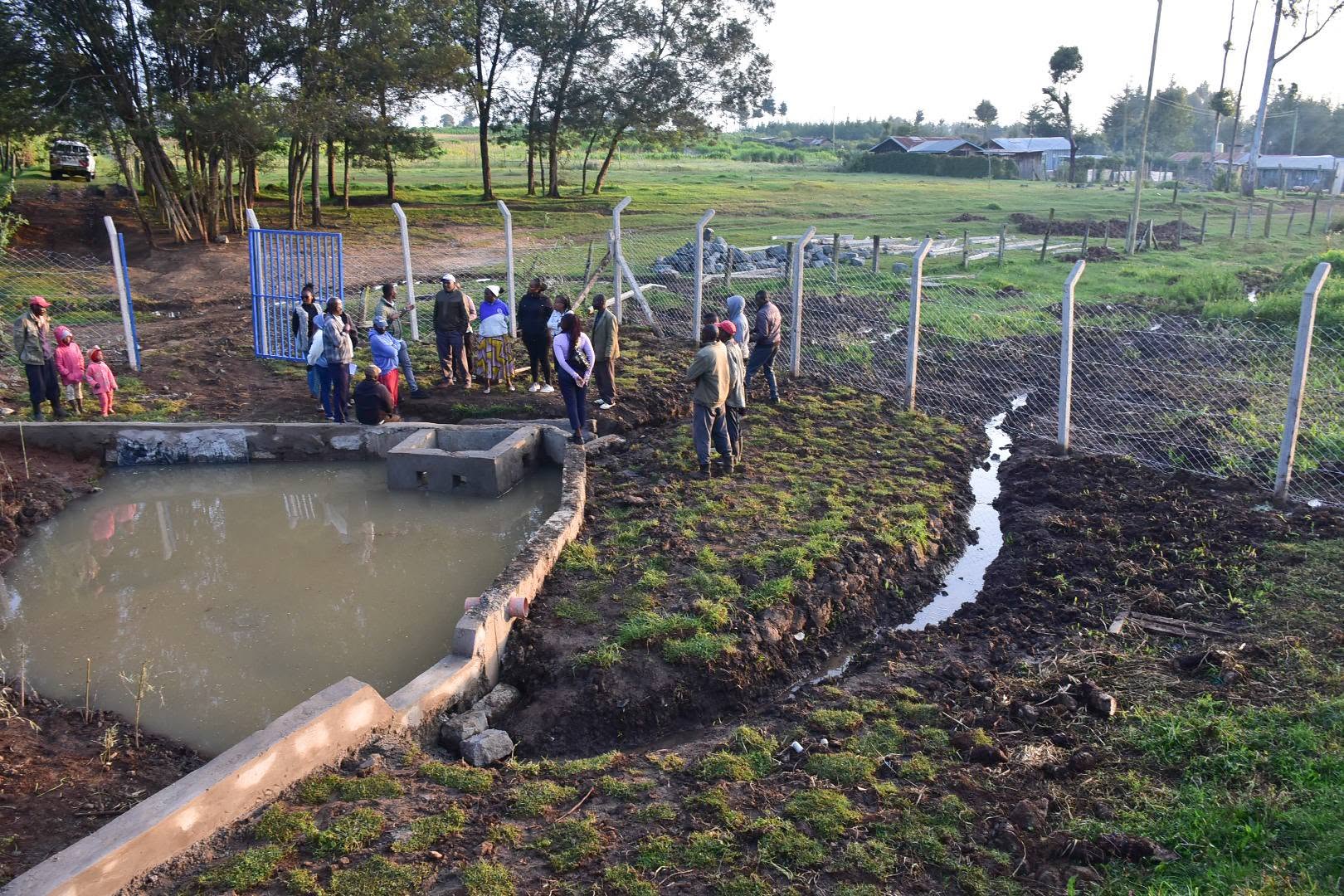 Kiguongo spring in Naromoru area that has been rehabilitated with the support of Financing Locally-Led Climate Action Pro¬gram (FLLoCA)
Kiguongo spring in Naromoru area that has been rehabilitated with the support of Financing Locally-Led Climate Action Pro¬gram (FLLoCA)Most of the springs have been in existence for a long time but some dry up due to environmental degradation and erratic weather patterns.
In the 2024-25 financial year, Nyeri begun the rehabilitation of Hathia, Gachie and Wamagana springs in Wamagana ward, Ituu spring in Gikondi ward, Gaikuru spring in Mukurwe-ini Central ward, Kinoria and Kiguongo springs in Naromoru-Kiamathaga ward and Kanjata spring in Kirimukuyu ward.
The county erects fences along the springs to prevent unauthorised human and animal activities that can degrade the area.
Gabion installation provides structural support to stabilise the terrain and prevent the land surrounding the spring from caving in.
Culverts are also installed to manage surface runoff and excess flow during rainy seasons, ensuring proper drainage and preventing flooding or waterlogging and water drawing points established for easy accessibility of water by community members for use in their homes.
Cattle troughs make it easier for livestock to quench their thirst at the spring, reducing the time needed for water collection and eradicating the need for residents to fetch water from the springs for their cattle.
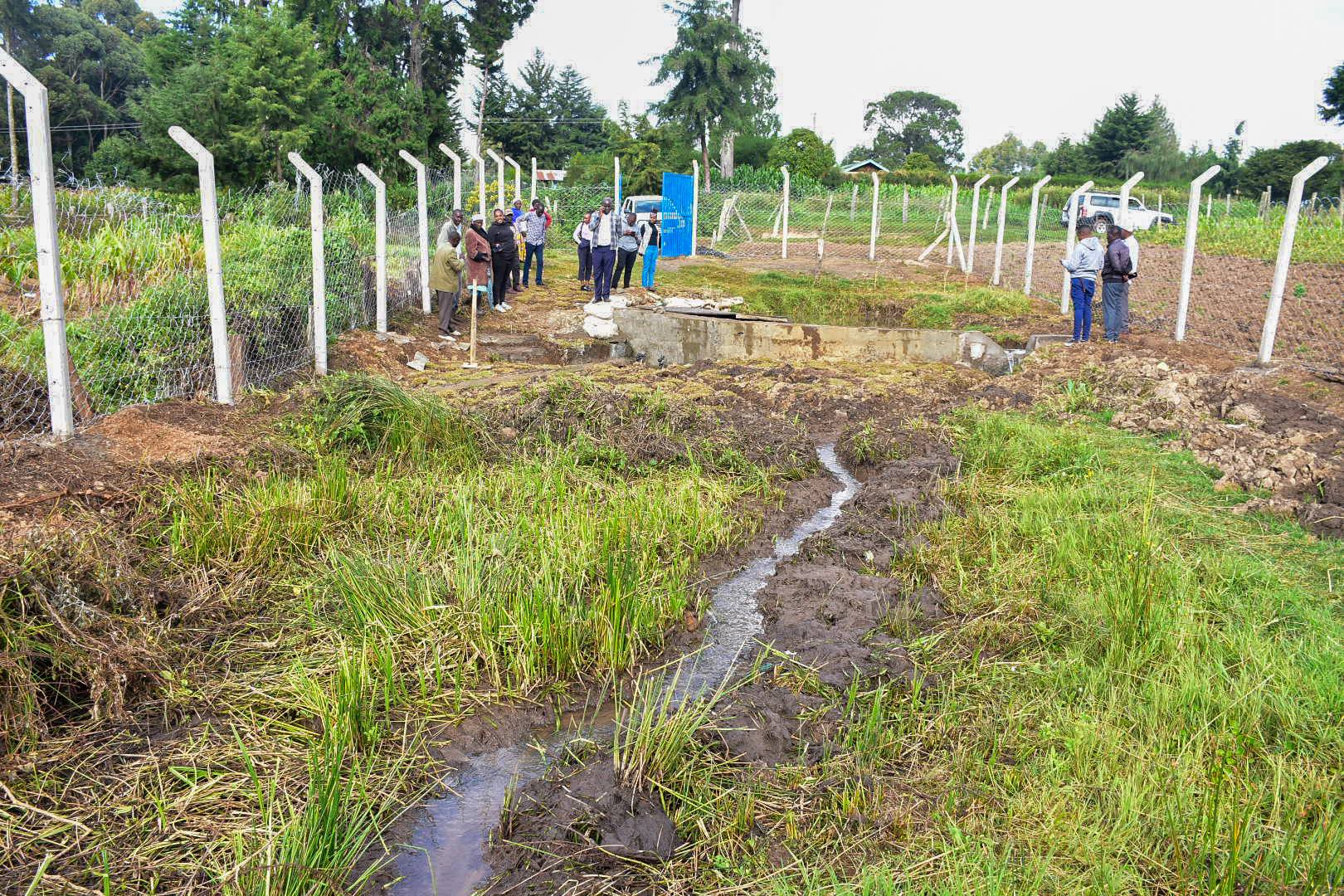 Kinoria spring in Naromoru that has been rehabilitated and renovated by Nyeri county government
Kinoria spring in Naromoru that has been rehabilitated and renovated by Nyeri county governmentUnder the project, indigenous trees and grasses are also planted to replace riparian unfriendly species that have negatively impacted proper drainage and mitigating flooding, affecting spring sustainability.
During the Participatory Climate Risk Assessment and County Climate Action Plan process, benefiting communities expressed their vulnerability due to their dependence on the springs that they said are their main source of water for domestic use.
The residents said the springs face reduced flow during drought seasons, leaving them vulnerable and reducing their agricultural proceeds.
“This project holistically integrates environmental conservation and natural resources protection which are critical in mitigating against climate change while addressing the challenge of springs degradation and unreliable water access,” Kinyua said.
The county has since formed project management committees comprising of representatives from Water Resource Users Associations, Community-Based Organisations and Ward Climate Change Planning Committees that have undergone training to monitor and evaluate the progress.
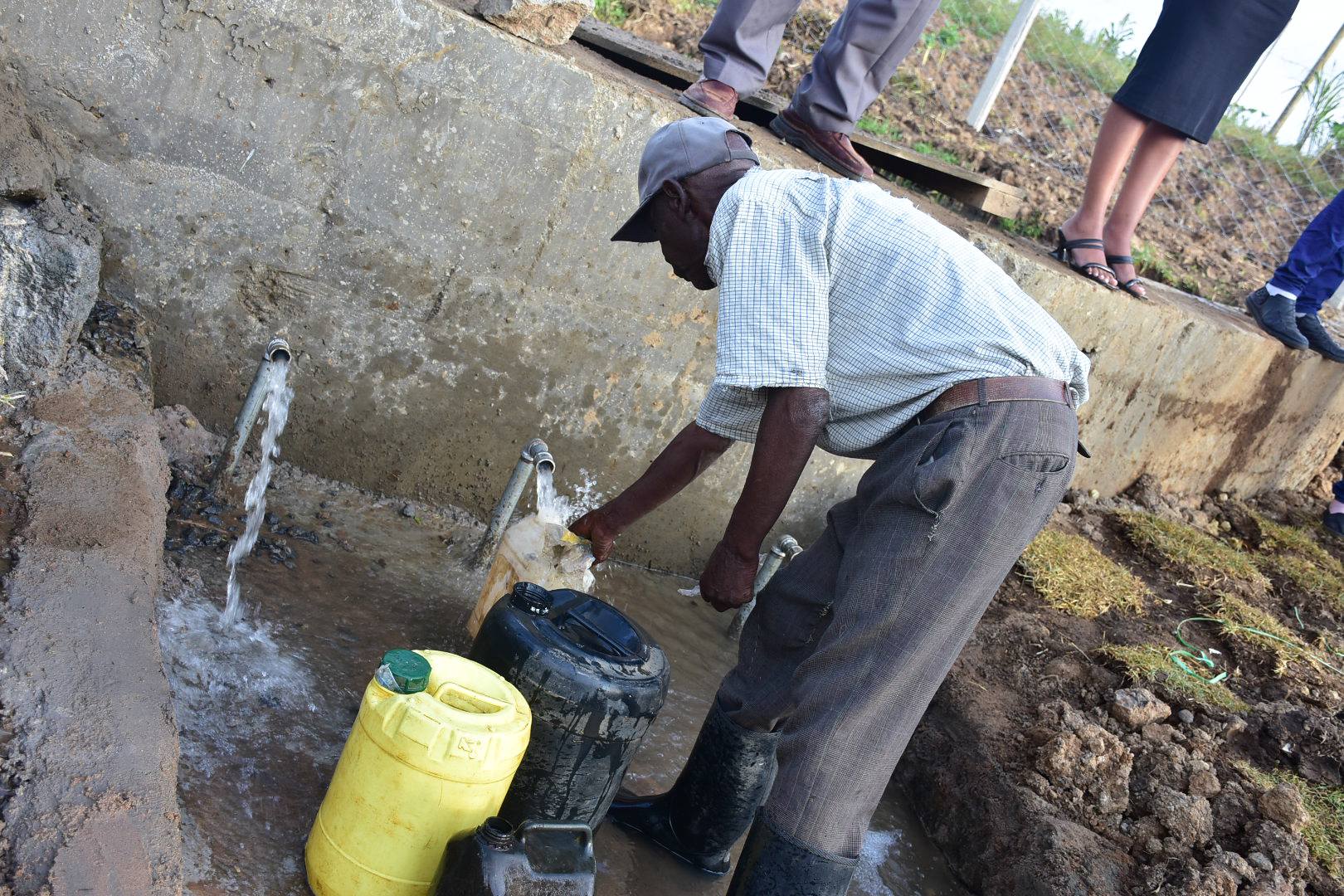 A Nyeri resident fetches water from the rehabilitated Kinoria water spring
A Nyeri resident fetches water from the rehabilitated Kinoria water springAt Hathia water spring, a seven-member Project Management Committee has been formed to monitor the project that is expected to be completed soon.
The community project has for many years been used by residents for water consumption and the upgrade is expected to significantly increase the water volume, providing more water for locals.
The rehabilitation and upgrade of Kanjata spring has also started and is expected to reduce reliance on treated water provided by water companies.
Kinyua said to ensure the sustainability of the rehabilitation projects, the programme integrates capacity building, maintenance of the upgrades and infrastructural safeguarding in partnership with the community.
By 2019, Nyeri had the highest coverage of piped water at 64.3 per cent followed by Kiambu at 53 per cent and Nairobi at 51.1 per cent.
Instant Analysis
According to the Kenya Health Demographic Survey released in 2022, only 25.3 per cent of Kenyan households have access to piped water in their houses, yards or plots with only 15.1 per cent of rural families accessing the precious commodity. This has compelled many rural families to rely on rivers, springs and wells as their main source of water, exposing them to waterborne diseases and water shortages. As such, Nyeri county has started rehabilitating springs relied upon by residents for water in partnership with Financing Locally-Led Climate Action Program, a World Bank-funded programme.



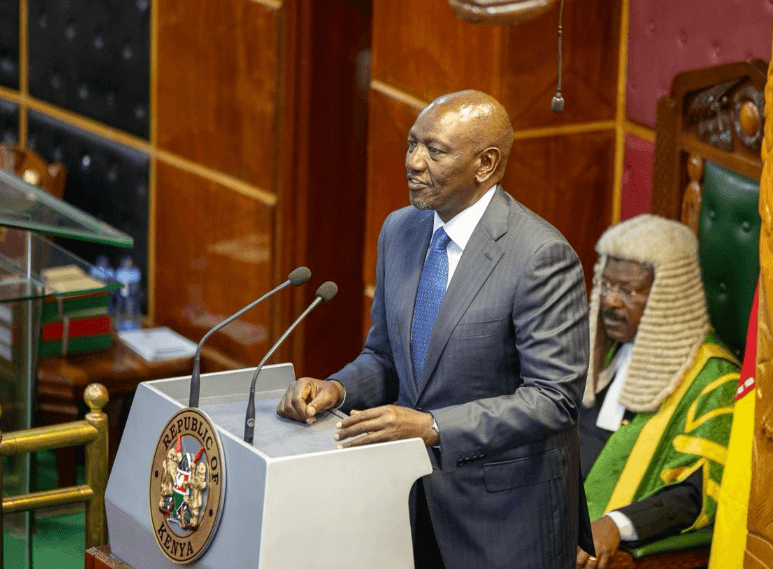


![[PHOTOS] Betty Bayo laid to rest in Kiambu](/_next/image?url=https%3A%2F%2Fcdn.radioafrica.digital%2Fimage%2F2025%2F11%2F3b166e2e-d964-4503-8096-6b954dee1bd0.jpg&w=3840&q=100)







![[PHOTOS]Goons vandalise Nargis Restaurant in Westlands](/_next/image?url=https%3A%2F%2Fcdn.radioafrica.digital%2Fimage%2F2025%2F11%2Fa1c98f6c-2b1d-4b50-b112-1def4d93a193.jpeg&w=3840&q=100)

